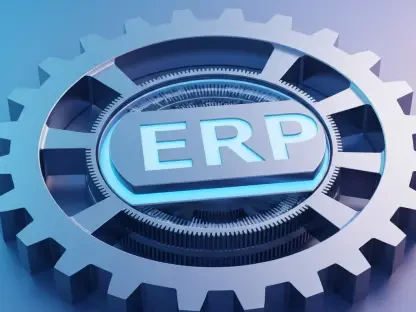Anand Naidu, our resident Development expert, is proficient in both frontend and backend development, offering deep insights into various coding languages. In this interview, Anand delves into the complexities and strategies of managing cloud computing costs and explains how they intersect with development practices.
What challenges do IT leaders face when they receive cloud invoices that exceed expectations?
When IT leaders receive unexpectedly high cloud invoices, they face the immediate challenge of identifying the causes behind the cost spikes. They must swiftly analyze the anomalies, communicate these to the finance team, and realign their IT strategies to bring costs back in line with budgetary expectations. This situation can be particularly daunting when the budget variance requires additional approvals, causing potential delays in workflow.
How can unexpected spikes in cloud costs affect an organization’s budget and production roadmap?
Unexpected spikes in cloud costs can severely disrupt an organization’s budget, forcing them to re-evaluate their entire production roadmap. When the financial balance is disrupted, teams might need to cut down on other essential projects or revise their existing architecture, potentially delaying key deliverables and innovation. This financial uncertainty can further lead to strategic hesitations, impacting the organization’s ability to scale or pursue new initiatives confidently.
Why is it crucial for devops teams to monitor cloud costs regularly?
Regular monitoring of cloud costs by devops teams is crucial because it prevents unforeseen financial surprises and helps maintain financial discipline. By keeping a close eye on expenditures, teams can identify and address inefficiencies early, preventing technical debt from accumulating. This proactive approach ensures the sustainable use of cloud resources and aligns spending with business priorities, mitigating the risk of sudden budgetary constraints.
What are the benefits of adopting a proactive approach to finops?
Adopting a proactive finops approach means organizations can make data-driven decisions that align cloud spending with actual business priorities. This foresighted strategy fosters an environment where engineering, finance, and operations work together seamlessly, ensuring resource control, accountability, and maintaining financial health. As a result, businesses enjoy greater agility and can respond to market changes more swiftly and strategically.
Can you explain the concept of “shifting left” in finops, and how does it compare to shift-left practices in development and security?
“Shifting left” in finops involves integrating financial operations into the early stages of development processes, much like how QA or security are incorporated sooner rather than later. When compared to development and security, shift-left in finops means addressing cost considerations and optimization strategies at the start of the development cycle. This practice prevents issues related to unmanaged costs from becoming critical technical debt, much like addressing potential security vulnerabilities from the outset.
What finops best practices should organizations consider to efficiently manage cloud costs?
Organizations should centralize reporting to gain a unified view of cloud expenditures. Benchmarking cloud infrastructure helps ensure competitiveness and efficiency. Forecasting peak usage allows teams to prepare for spikes and manage resources optimally.
How do cloud development environments (CDEs) benefit developers and organizations?
Cloud Development Environments (CDEs) offer structured, cloud-based workspaces that improve resource control and cost optimization. They empower developers by providing consistency across development efforts, which can streamline onboarding and reduce discrepancies between dev and production environments—ultimately enhancing workflow and productivity.
Why should cost control strategies be integrated into an organization’s IaC strategy?
Integrating cost control into an organization’s Infrastructure as Code (IaC) strategy ensures that expenses are managed during the coding process, rather than being an afterthought. Setting cost controls up front in the deployment process prevents unexpected financial overruns and aligns the technical process with fiscal accountability, creating a more sustainable tech environment.
How can organizations use insights from finops reports to optimize cloud usage?
Finops reports, which detail cloud consumption patterns, enable organizations to optimize resource usage by highlighting areas of waste or overuse. By analyzing these insights, teams can resize instances, reduce unused resources, and enforce sensible usage limits, optimizing their cloud infrastructure for cost efficiency.
What is the significance of aligning cloud costs with business value?
Aligning cloud costs with business value ensures that every dollar spent on cloud services contributes directly to organizational goals. This alignment drives smarter decisions, helping teams understand the impact of their cloud investments in terms of profitability and growth, and supports the development of financially sound architectures.
How can organizations measure cloud unit economics to make informed cloud architecture decisions?
Organizations can measure cloud unit economics by assessing the marginal cost per use against marginal revenue. This evaluation helps identify break-even points and areas of profitability in cloud operations, enabling teams to make informed decisions that enhance overall efficiency and financial health.
What additional business values can mature finops practices provide beyond cost savings?
Beyond cost savings, mature finops practices can enhance security by identifying unusual patterns that might indicate vulnerabilities or risks. They promote a culture of accountability and ownership among teams, enhancing cooperative efforts across engineering, finance, and operations, which reinforces strategic alignment and operational resilience.
Why is transparency in cloud costs important for development teams, and how does it relate to technical debt?
Transparency in cloud costs is vital for development teams because it encourages accountability and understanding of financial impacts. This open approach helps prevent the accumulation of technical debt, as developers become more attuned to the cost of their decisions and are thus encouraged to focus on efficient, cost-effective design from the project’s outset.
What steps can organizations take to integrate finops practices effectively into devops teams’ responsibilities?
To integrate finops into devops effectively, organizations should foster a culture of financial accountability by providing access to cost data and insights. This involves educating teams on the impact of their cloud usage and embedding cost considerations into their day-to-day operations. Implementing automated alerts for unexpected expenses and regular training sessions can also help nurture this integration.
What is your forecast for the future of finops in cloud computing?
The future of finops in cloud computing is likely to see its practices becoming more intrinsic to the entire cloud lifecycle, from design to deployment, creating a seamless integration with devops and devsecops. As cloud adoption continues to grow, the role of finops will expand beyond cost management to influence sustainability, optimization, and long-term strategic planning, making it an indispensable component of technology operations.









